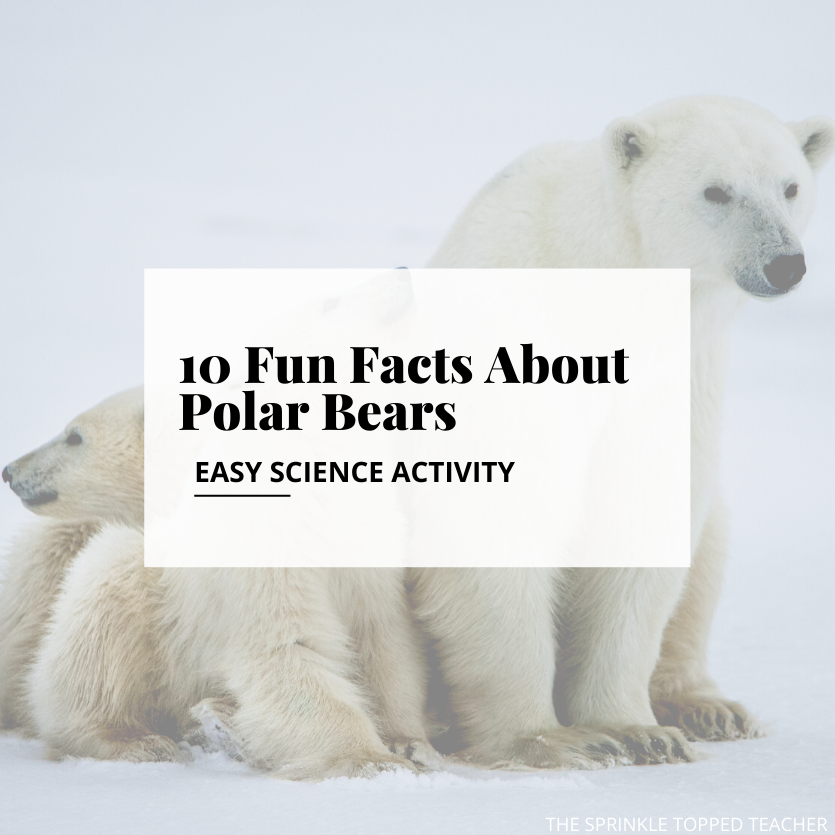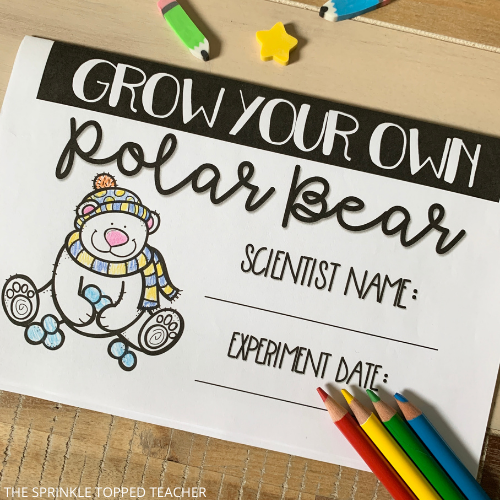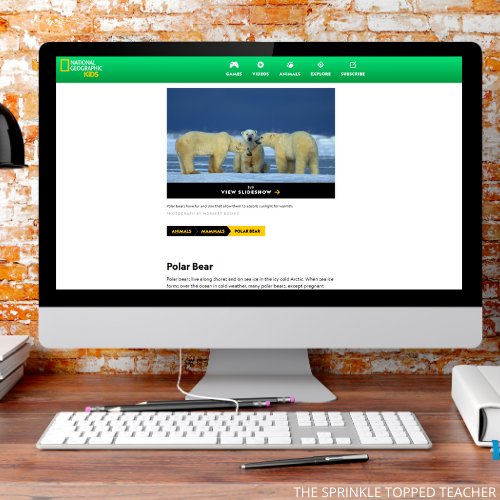
10 Fun Facts About Polar Bears To Teach Your Kids + Activity!
Nothing but polar bears can be cuddly and humongous at the same time.
Really, we’ve fallen in love with them!
But honestly, as a teacher, just teaching facts about anything, even polar bears can be tough.
The key to good teaching is getting students to learn their facts – without boring them to death.
So, let’s talk about building a unit on polar bears that involve fun hands-on activities in the classroom.

Facts About Polar Bears
Did you know that polar bears are not actually white?
They are huge – but very quick on their feet. (No foot races for me!)
How long can the largest carnivore swim? Days without stopping.
These are just a few of the things you can discuss with your students in a unit about polar bears. And in the meantime, students can grow their own polar bears in a fun hands-on activity. At the same time, they will be learning the scientific method! You just can’t beat that!

How does the Grow Your Own Gummy Bears Science Experiment Work?
The Grow Your Own Polar Bear Experiment is a fun gummy bear science activity you can use to walk elementary students through the steps of the scientific method. It comes with a print version and a FULL digital version.

The experiment involves soaking gummy bears in different substances. Students will make their hypothesis about each substance and observe the results before making a conclusion and recording their observations. This is the perfect complement to a unit on polar bears.

You’ll get a digital download of printable worksheets including directions and explanations. But you will also get the entire package in a digital format. Kids can do the whole thing on the computer. This allows you to provide instruction remotely if needed.
Teacher Tip: If you are distance learning, record yourself doing the lesson or complete it live with students!

What about the 10 fun facts about polar bears?
I promised 10 fun facts about polar bears that you can incorporate into the unit. Here are my top 10 favorite facts. But feel free to use a few of your own depending on what other science-related topics you have covered with your class.
· Polar bears live in the Arctic.
· Their primary food source is seals.
· Polar bears are really black with transparent hair.
· Most polar bear births are twins.
· They can go up to 8 months without eating when food is scarce.
· They are the largest land-dwelling carnivore.
· A polar bear’s paws are designed specifically for moving along slick, icy surfaces.
· Global warming is a huge threat to the polar bear’s existence.
· The polar bear’s white appearance acts as a camouflage in the Arctic environment.
· Polar bears can sustain a swimming pace of 6.2 miles per hour.

Fun Polar Bear Research Websites:

Action Step
Check out some of the amazing resources on polar bears and grab a copy of the Grow Your Own Polar Bear Experiment here!
The booklet includes all the paperwork you need to conduct the experiment with your students. In addition, you will need a few items such as baking soda, water, salt, and vinegar. Plus, some small containers to put the bears and liquids in. it’s easy and loads of fun!
If you are a fan of easy science experiments in the classroom, I organized them all in one place over on my blog!
Do you know any cool ways you teach the scientific method? Share your ideas with us!